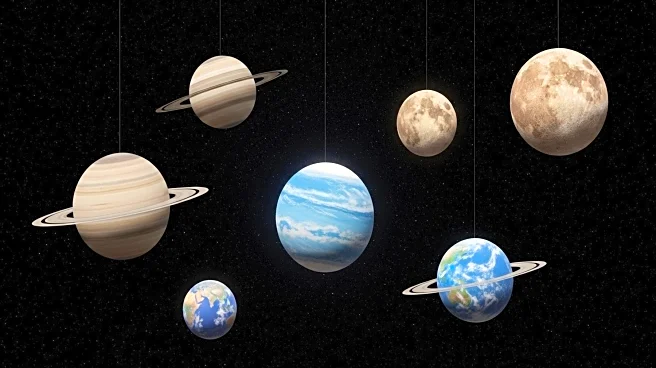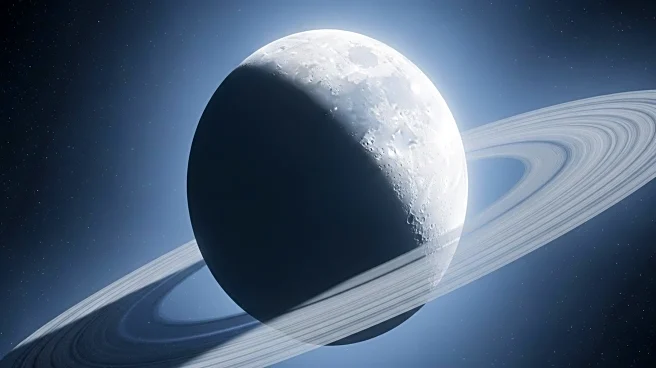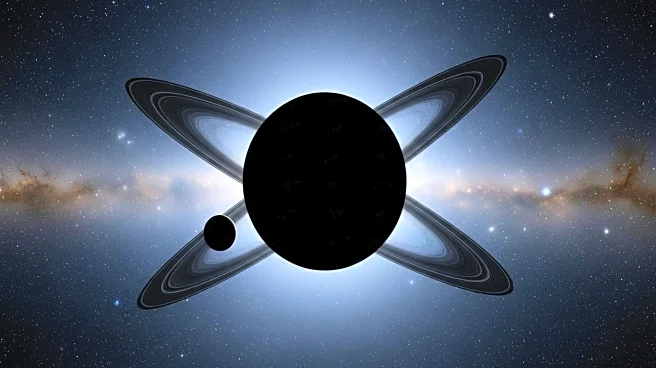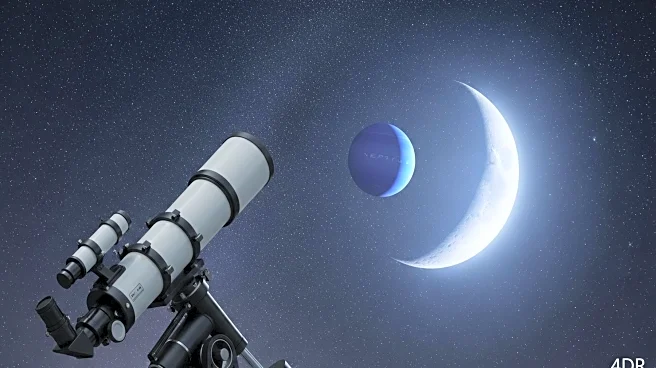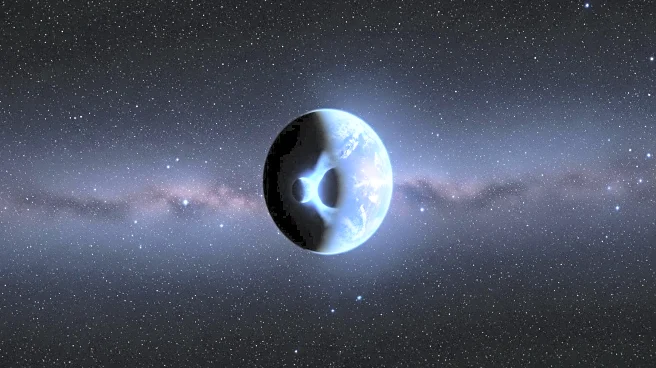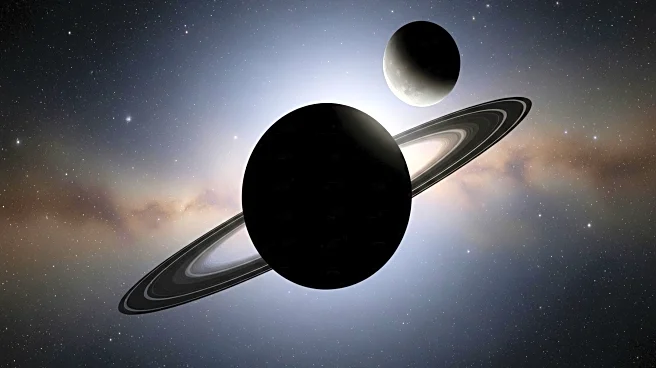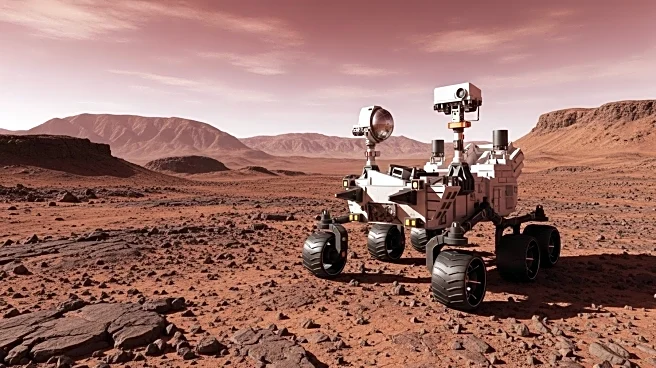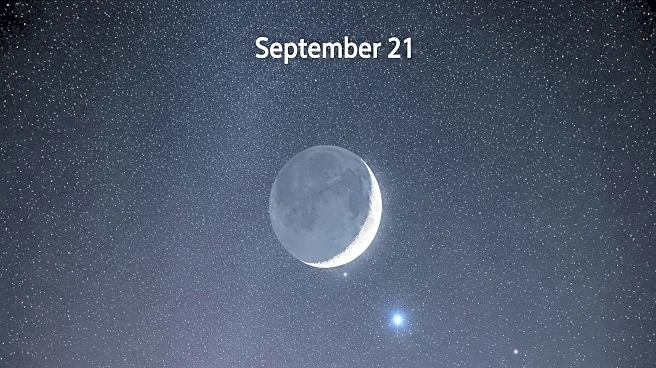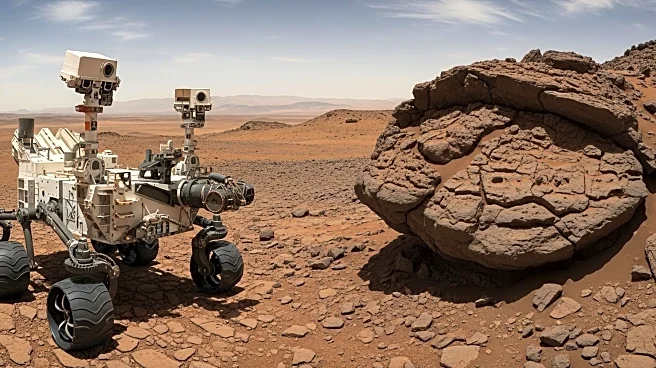What's Happening?
On September 21, 2025, Saturn will reach its annual opposition, aligning with Earth and the Sun. This celestial event allows Saturn to be brightly illuminated by sunlight, making it visible throughout the night. The planet will rise in the eastern sky at sunset and peak in visibility around midnight. The new moon phase will provide minimal interference, creating ideal conditions for viewing Saturn without telescopic equipment. Despite appearing close, Saturn remains over 740 million miles away from Earth. Telescopes can reveal features such as Saturn's rings and its largest moon, Titan.
Why It's Important?
Saturn's opposition is a significant event for astronomers and the public, offering a chance to observe the planet's features and its position in the solar system. The event highlights Saturn's unique ring system, which is more prominent than those of other outer planets. Observing Saturn during opposition can enhance understanding of its physical characteristics and the dynamics of its moons. The event also serves as an opportunity to engage the public in astronomy, fostering interest and education in celestial phenomena.
What's Next?
After opposition, Saturn will remain visible for several weeks, though its visibility will gradually decrease. Other planets, such as Neptune and Uranus, will also reach opposition later in the year, requiring telescopic equipment for observation due to their distance from Earth. Mars will have its closest opposition in February 2027. These events provide ongoing opportunities for astronomical observation and public engagement, encouraging continued interest in the study of the solar system.

